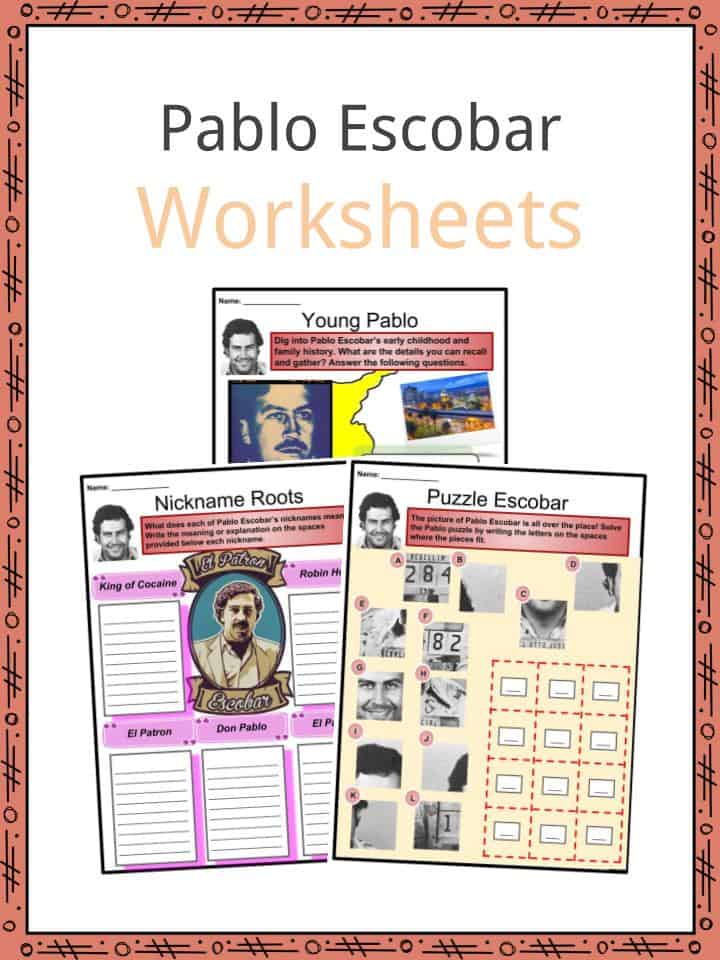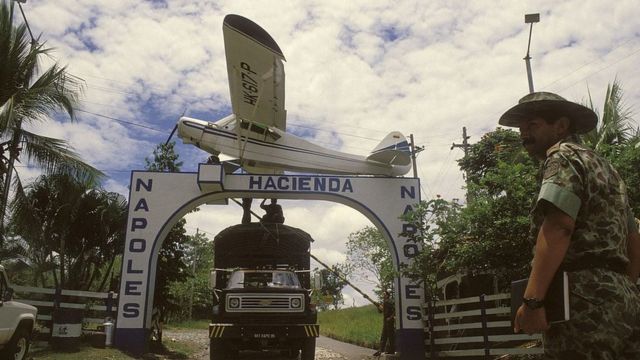
Beneath a writing desk in the living room, Escobar lifted a plank to reveal a hidden compartment. Inside, a Jet Ski-supposedly one that Roger Moore used in a James Bond film-sat near a photograph of Escobar driving it across bright-blue water. An exterior wall was speckled with ragged bullet holes, the result of a kidnapping attempt. Roberto was a gruff tour guide, hustling guests from room to room, but his visitors seemed too awestruck to complain. His damaged eye was a milky blue, and he periodically squirted drops of medicine into it. While he was in prison, a letter bomb delivered to his cell exploded, leaving him blind in his right eye and deaf in his right ear. Roberto, seventy-one, still looked like an accountant he wore khakis, a blue short-sleeved shirt, and thick-rimmed spectacles. One recent morning, a group of visitors from the United States and Europe arrived in a chauffeured van-part of a growing influx of narcoturistas, who come to see the places where Pablo Escobar lived and worked. The house, a bungalow of white painted brick, can be reached by a gated driveway off a steep mountain road, roughly halfway between the Envigado plateau, where Pablo Escobar grew up, and the middle-class neighborhood in Medellín where he was gunned down by Colombian police, in 1993. These days, Roberto Escobar, having served fourteen years in prison, earns money by leading tourists around one of his family’s former safe houses. Once, during an extended hike through the forest to elude capture, he threw a briefcase containing a hundred thousand dollars into a river, because it was heavy. Although Roberto was never as extravagant as his brother, he was accustomed to flying on private jets, and sent his children to a Swiss boarding school. Known as El Osito, or Little Bear, he was the older brother of the narcotrafficker Pablo Escobar, who was then among the richest men in the world, responsible for a drug-smuggling empire that extended from Colombia to a dozen other countries.

When Roberto Escobar was the head accountant for the Medellín cartel, in the nineteen-eighties, he handled billions of dollars a year-so much cash that he sometimes resorted to stuffing it in plastic bags and burying it in the countryside.

To hear more feature stories, download the Audm app for your iPhone. This content can also be viewed on the site it originates from.Īudio: Listen to this story.


 0 kommentar(er)
0 kommentar(er)
